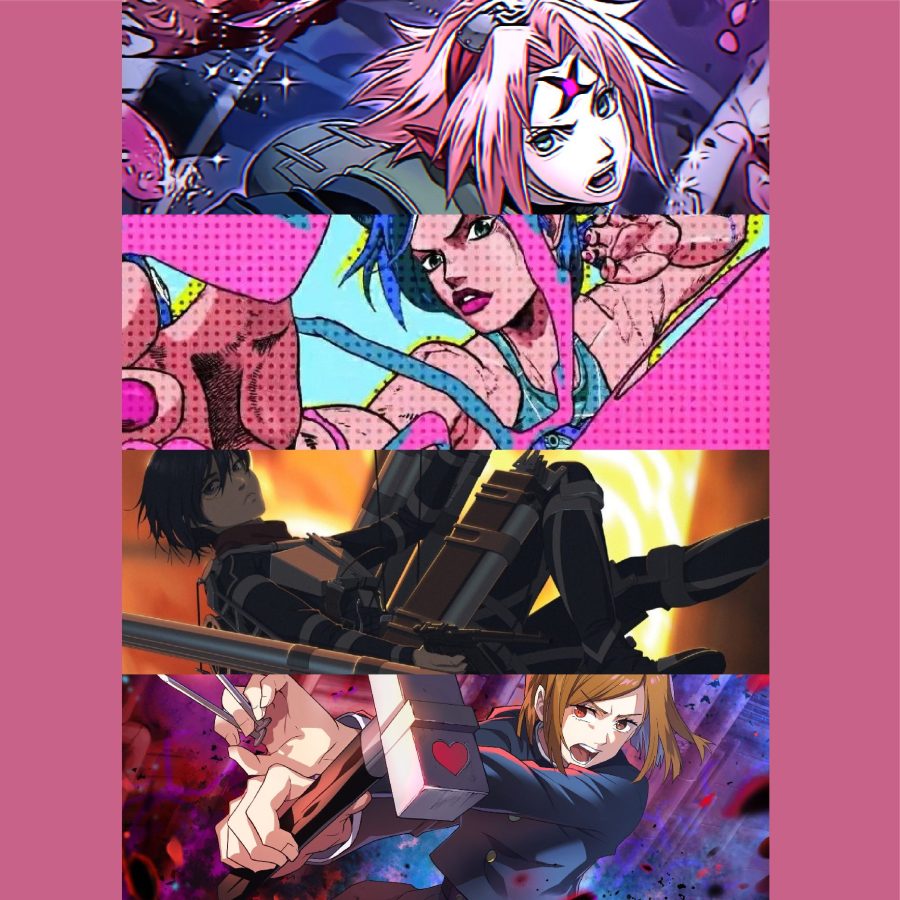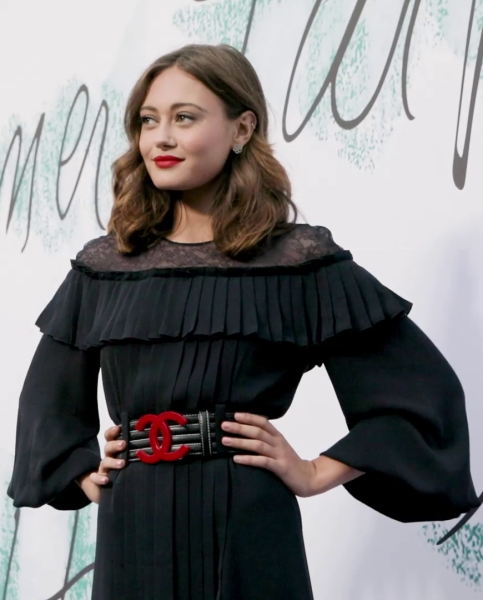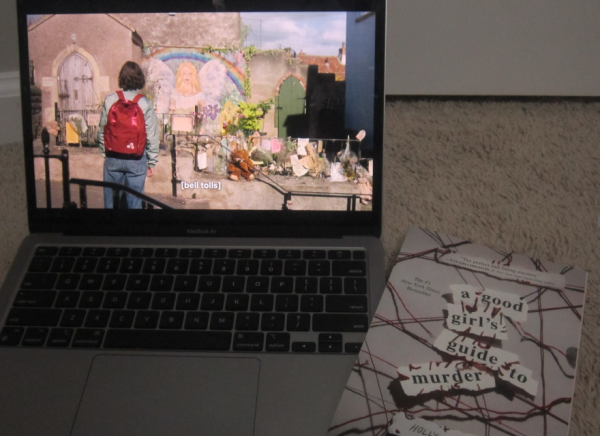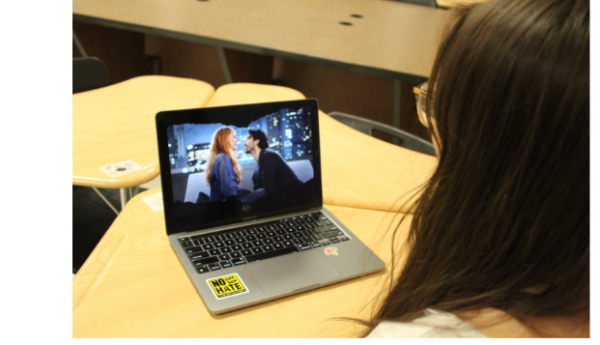Shonen Anime: The Tragic Battle of Heroine Writing and Viewer Perception
Pictured above, Sakura Haruno, Jolyne Kujo, Mikasa Ackerman, and Nobara Kugisaki.
In a world filled with mystic power systems, colorful characters, and heart-wrenching stories, shows like “Naruto,” “Attack on Titan,” “Jojos Bizarre Adventure World,” and “Jujutsu Kaisen” all follow young male protagonists as they are thrown into the role of a hero. Typically, shonen, a sub-genre of anime that follows a protagonist’s journey in a fantasy world and is targeted towards 12 to 18-year-old boys. However, the genre has reached many more than its targeted audience. Through its mixture of epic fight scenes, comedy, and usually a touch of tragedy, shounen has drawn in different age groups and genders.
What makes shonen special is that the viewer can let this fantasy world engross them into a world separate from their own. They can see themselves through the characters and feel that they are along on the adventure. This all makes for a great genre and excellent viewing experience, but the problem comes in the writing of female characters. Shonen has a notorious reputation for writing flat, bland, stereotypical women, treating even main supporting characters as minor roles. Characters with significant roles in shows, ranging from Sakura from “Naruto” to Mikasa from “Attack on Titan”, are written off as annoying or useless. However, what are the actual faults of these misunderstood heroines?
The Battle Of Femininity With Heroines
Across all genres, male writers have one common problem when writing: do feminine traits discredit a woman’s ability to be seen as a hero? In older shows like “Naruto,” femininity and heroism are two things that do not overlap. For a character like Sakura, the only girl in her team, she is often met with hostility and distaste from viewers. Sakura is a confident, quick-tempered, hopeful ninja fighting along with her teammates while simultaneously trying to grasp the romantic interest of one of them. In a small survey conducted to Patriot upperclassmen through Google Survey, the main consensus surrounding Sakura is that she’s useless, annoying, and too obsessed with a male teammate, Sasuke, she has a crush on. But what Sakura indeed lacks is depth.
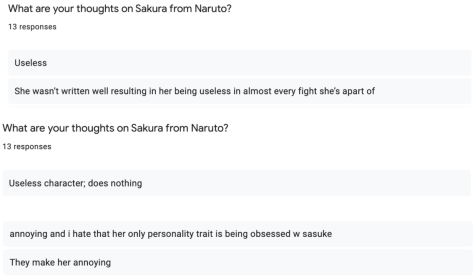
Viewers can’t connect to a character without depth or raw motivations like her male counterparts who have these things woven into their character arcs. Instead, her femininity is weaponized against her. While Naruto’s loudness and energetic nature are seen as part of his charm, a feminized version is perceived as a shallow and weak character.
When Mikasa Ackerman from “Attack on Titan” made her debut into season four, she had a complete makeover since the time jump between seasons three and four. After the debut, many took to different
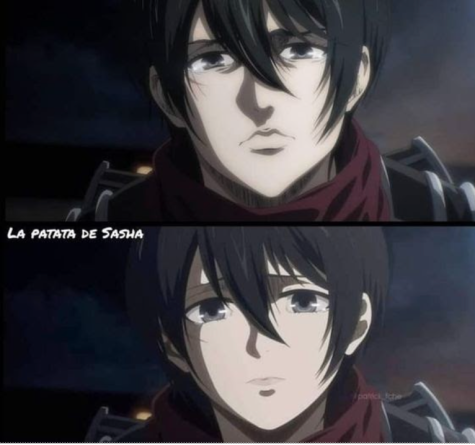
media platforms to complain about her short hair and “manly” physique. What viewers failed to realize was that Mikasa had simply gotten older. Not only that, but she is a soldier who trains intensely, who lives in a world devoid of sunshine and rainbows. But as we can see from these reactions, it seems fans are more upset that Mikasa just doesn’t fit the traditional male gaze.
So what’s the solution? Does a heroine have to be cold and emotionally distant with short hair in order to be taken seriously as a hero? ¨Jujutsu Kaisen¨, an anime similar to ¨Naruto¨, shows us this doesn’t have to be the case. From ¨Jujutsu Kaisen¨, Nobara Kugisaki has developed writing and is a fleshed-out character which proves to be beneficial. In the same survey, many students seem to enjoy her character. Nobara, like Sakura, is quick-tempered and confident and fights alongside two male students. But besides destroying cursed spirits, Nobara also cares about her hair and makeup and even expresses that she wants a boyfriend. The difference for her could be is that viewers see this as slightly less problematic because she is not romantically pursuing a team member. Nobara shows the average shounen viewer that she can be just as strong as her male counterparts while still embracing her feminine side. She even admits mid-battle that she doesn’t care if she’s too “girly” to be considered heroic and that she’s going to fight just as hard and leave the battlefield still caring about her hair and makeup. This is the type of exploration Sakura never received. She does have deep meaning and complex traits and motives, however, she is passed off as shallow because of her personality. Instead, Sakura is absorbed as a one-dimensional character.
The Parallelism Between Female and Male Character
In animes like “Attack on Titan,” writer Hajime Isayama utilizes foreshadowing, character foils, and parallelism to advance the plot and meaning. In regards to his female and male characters specifically, Isayama creates foils between the two characters. Eren Yaegar and Gabi Braun.
Eren and Gabi, both quick to anger, passionate, determined, and brave characters, are on opposing sides in the Attack on Titan universe. Eren fights to free his oppressed race (the Eldians) for the sake of his loved ones. Gabi fights to free those same people (the Eldians), including her loved ones. Although they are so similar, fans still have enormous hate for Gabi. In the same survey referenced above, 56% of students voted that they did not like Gabi. On the contrary, comments used to describe Eren included words like, “powerful,” and “cool.” Despite this, something that should be recognized is that viewers have been following the story of Eren for four seasons while only knowing Gabi for one.
In the defense of Gabi Braun and Mikasa Ackerman
While Gabi has indeed killed another beloved character, even before that, she was diminished to simply being annoying. Furthermore, if killings seem to be a problem for ¨Attack on Titan¨ fans, Eren Yeager should be the most hated character. Underneath the exterior of ¨Attack on Titan¨, the show deals with complex themes that require an open-minded viewer. One who is open-minded enough to realize that Gabi, Eren, and the team he fights with were the true enemy. Additionally, Gabi, like Eren, has gone through similar experiences in life. But maybe it really is because she is technically on the antagonist side of the show.
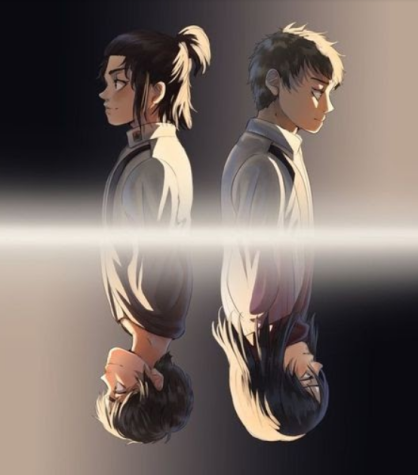
Except for their close companions, Mikasa and Falco, who show otherwise.
Fiercely loyal, caring, and protective. These are the traits Hajime Isayama paints his two characters also on opposing sides: Mikasa Ackerman and Falco Grice. Although Mikasa is by Eren’s side and Falco is on Gabi’s, the two characters are still interpreted differently by fans. Though Falco, like Gabi, has only appeared for one season, he receives an overwhelming amount of love from the fanbase and rarely receives hate. In fact, 92.6% of our own students surveyed responded that they enjoy Falco. Mikasa, on the other hand, has received taunting for all four seasons of the shows running simply for her devotion and love to Eren. Despite being arguably the most powerful fighter in the show, she has been written off by many as “obsessive.” Both characters have been caught in the same situations. Falco has jumped in front of artillery just to protect Gabi, while Mikasa has protected Eren since they were ten years old. The world of Attack on Titan has two characters both devoted to who they love. One receives constant love while the other faces non-stop criticism.
The End Goal:
It’s time for the art of shonen anime to catch up to writing well-developed female characters. It’s also time for many shounen viewers to put to rest the unnecessary slander and unfair double standards they put onto many female characters. Shows like “Jujutsu Kaisen”, “Jojo’s Bizarre Adventure”, and “Attack on Titan” have showcased a wide range of powerful women who can compete with, and even excel, their male counterparts. It seems shonen is reaching the light at the end of the tunnel. While not every character will be likable, holding a character down because of their femininity is what holds viewers and writers back from likeability, exposure, and growth.
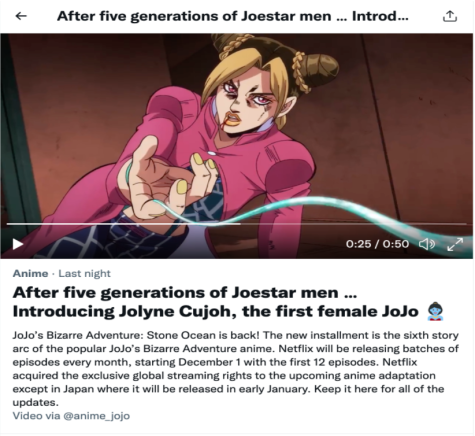
Your donation will support the student journalists of Patriot High School. Your contribution will allow us to purchase equipment and cover our annual website hosting costs.

